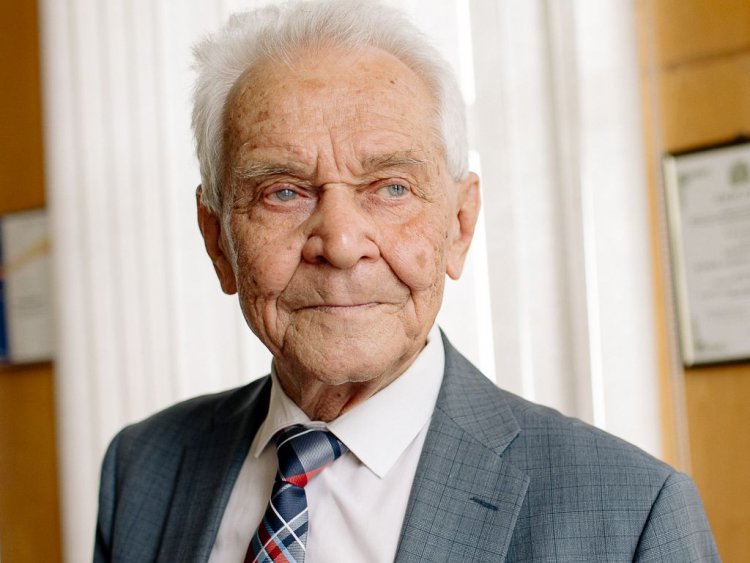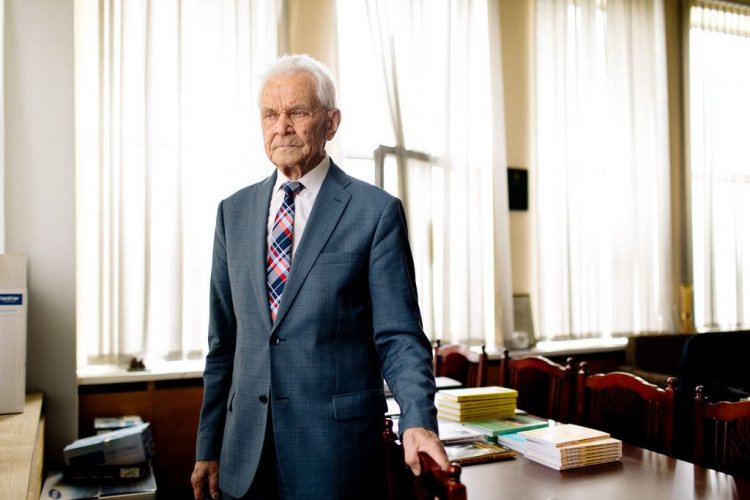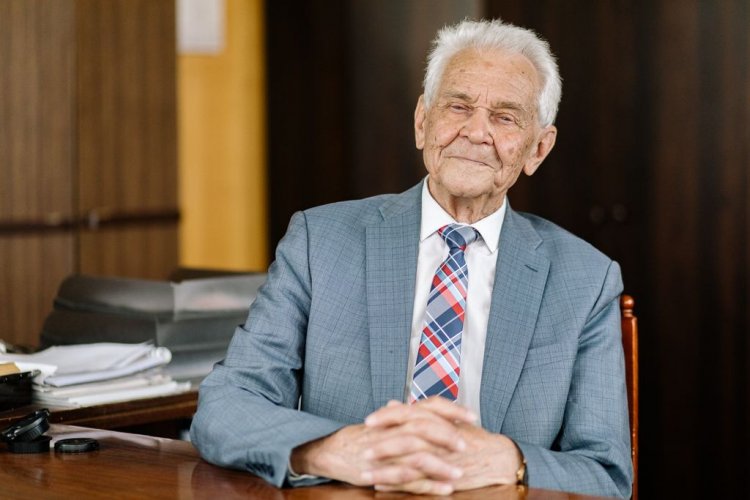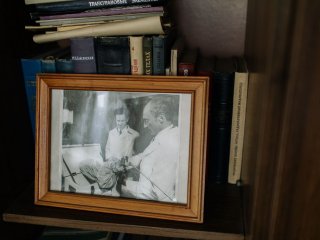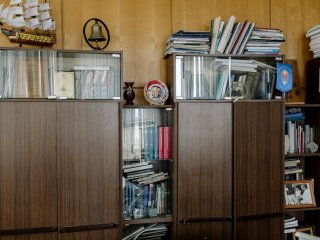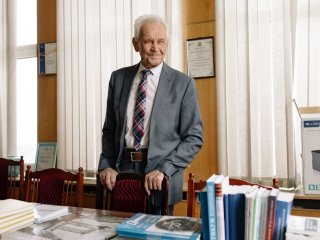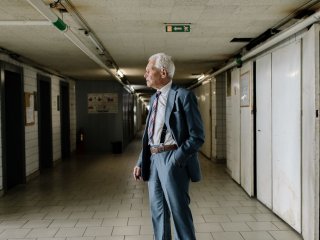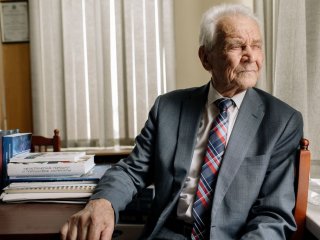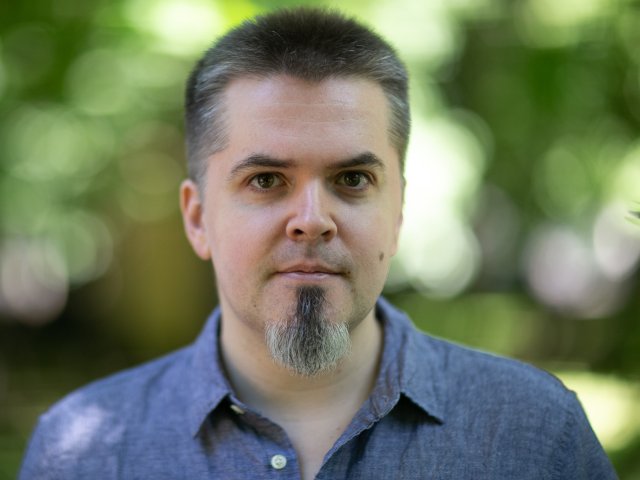We all know about the analyzers, like nitrate sensors or CO detectors. Is it possible to create other pocket analyzers of food and medicine quality? So that you could go to the store or the market, apply the device to it and see if you should buy it or not.
Yes, it is possible! Yury Aleksandrovich Zolotov, a senior researcher at the Faculty of Chemistry at Lomonosov Moscow University, a senior researcher at the Institute of General and Inorganic Chemistry of the Russian Academy of Sciences, an advisor to the Presidium of the Russian Academy of Sciences, talks about the great practical prospects of such an important fundamental science as analytical chemistry.
– Yuri Aleksandrovich, let's talk about the scientific work that you've been carrying out recently, despite the pandemic and the fact that you have to isolate yourself from the world outside. What kind of work is this? What are you doing now?
– Lately I have been working on the general methodology of my field of study, analytical chemistry. What do I mean by general methodology? It is a clear definition of science, the stimuli for the discipline development, the correlation of its fundamental and applied aspects, its position in the system of sciences, the infrastructure of science. This is what we call the “science of science,” the self-knowledge of science. Last year I was even awarded for this work with the N.S. Kurnakov Gold Medal, which is awarded every five years by the Russian Academy of Sciences.
If we talk about more “down to earth” work, it concerns mainly the detection and determination of various micro components in food products, in medicines, in environmental objects, and so on. A team of young researchers and graduate students is working in this field under my guidance.
– Tell us more about this work. How do you detect all these substances? What are these substances and what are they used for?
– There are several directions of this kind of work. I mentioned pharmaceuticals; you can add veterinary drugs. Cows, say, are given all sorts of chemicals, such as antibiotics, to prevent diseases and sometimes to stimulate their weight gain or increase their milk yield. Alas, they find their way into agricultural products and milk. This is not welcomed by the consumers.
So, we need to find ways to detect the presence of these substances and determine their concentrations. And so we create some methods that allow us to solve this problem. The methods are different. Our young colleagues, for example, are now very actively using nanoparticles to concentrate substances like antibiotics and then determine them in the concentrate. This allows us to detect very low concentrations of such substances and, moreover, solve some other problems that are quite difficult to solve in other ways.
– What other problems do you solve?
– We have quite a few tasks. They include, for example, the analysis of oil and petroleum products. Remember the last year's story when refineries in Poland, Belarus, and Germany shut down because some foreign substances got into the oil that was flowing through the pipeline from our country? We had to urgently address the question of what those substances were, where they came from. The Department of Analytical Chemistry and some other departments of Moscow University were urgently involved in solving this problem. Our department's staff managed to figure out quite quickly what exactly this oil was contaminated with. Finding out did not solve the problem of purification, but knowing what the oil was contaminated with helped figure out the contamination source.
This is a single task, not a strategic one, but it is a good example of a task that analysts have to solve, because these tasks are of international importance.
Besides, we analyze quite a lot of environmental objects, primarily water, and create methods for controlling its quality and determining impurities in it. At the same time new tasks constantly arise, although it seems that the field has been well established for a long time.
Let me give you an example. As you know, water in Moscow is chlorinated, but it is also being partially ozonized, and the issue of gradually replacing chlorination with ozonization is being discussed. However, it turns out that ozonation gives rise to impurities in the water that do not occur during chlorination. The water contains very small amounts of bromine, and it forms the basis of ozonation substances that could be harmful to our health. Therefore, we had to detect and determine these substances. So, such methods had to be developed and we created them.
Besides, we are developing a general methodology of analytical control of environmental objects.
– What does it mean?
– The things is, there are lots of samples to analyze. There would not be enough laboratories to analyze all the impurities in a huge number of water samples. So, we have to change the approach. This problem can be solved by applying screening, multistage control. The first stage is a preliminary analysis, the review of samples with relatively simple means just to assess the pollutants presence. If there are none, then you can skip working with these samples completely. If there are some – then, yes, do more serious and detailed analyses, which require well-equipped laboratories.
Here's an example. The water can be contaminated with phenols. We have a chemical reaction for all phenols. If you do this reaction and see that there are no phenols in the water, then, there is no need to do anything further. If, however, it is found that phenols are present, then serious, expensive, and complex methods, which require qualified specialists to perform them, come into play. This is the screening approach, a multistep analysis, which makes it much easier to solve the problem.
– Yuri Aleksandrovich, it's great that you have developed such methods, that you know how to identify harmful things. But what happens to this information next? Did you learn to get rid of these harmful impurities somehow, be it in milk or water, or does all this remain a plain scientific development?
– Our task is to create methods, techniques, devices. Practitioners who work in applied control and analytical laboratories apply these methods and necessary devices. Such laboratories operate in the agricultural sector, in the environmental service, and in many other industries. But as a rule, they do not develop any methods, they use ready-made ones. Our task is to create these methods. And not just methods – a method often has to be accompanied by a device, a mechanism, a method of use. This is what our scientific task is all about. We do not solve the problem of a specific analysis of a specific object.
– When we go to the store and buy milk, for example, do you think we can be sure that there are no harmful contaminants in it? And the people you just mentioned have implemented all of this, used your designs and spared us from things that we shouldn't be consuming, so that we can drink and eat these products safely?
– You raised a topic that allows me to talk about a very interesting and promising direction. I'm talking about the fact that chemical analysis and control can be done not only in specialized laboratories equipped with complex and expensive devices. We need to create devices that can be used by everyone, including people who go to the market and buy a certain product. A person can take such a device and check on the spot whether this product is fit for consumption or not.
This is a strategic direction in the development of our science, we want to make analytical devices as mass-produced as household appliances, just like mobile phones and computers.
Not only that, such devices already exist. For example, glucose meters, which, as you know, allow us to determine the blood sugar content. An American engineer Adam Heller created the modern glucose meter. Thanks to his suggestion the whole industry for the production of glucose meters was created, and now the whole world is equipped with these devices.
When you come to the clinic, they put a device called a pulse oximeter on your finger. This is a very popular analytical device that measures oxygen in the blood.
These examples show that analytical devices can and must become mass-market household devices, and we are working in this direction. In addition to the devices I have already mentioned, there are nitratometers, household gas leak detectors, pregnancy tests, and sweat analyzers. The latter are useful for athletes; the lactate content in sweat can be used to estimate the degree of physical exertion. Let's say an athlete trains long enough, and in order not to overtrain, they can monitor the lactate content and stop their workout at the right moment. A lot of such devices and equipment can be created.
– You mean, one day we will be able to come to the store, apply this device to a bag of milk and find out whether this milk contains any harmful contaminants. And, accordingly, make a conclusion, whether we should buy it or not.
– It is quite possible. You can use a nitratometer for vegetables even today, although the quality of these devices is not very high yet. Creating simple and reliable devices of this kind requires intelligence and talent, it is not easy to progress in this direction. The creation of each device of this type requires a lot of effort, skilled professionals, mind games, and imagination. The glucometer, which is simple for the consumer, required a lot of effort of many people to develop it.
– What is the situation with the intelligence and talent today?
– I think that our country has something to offer in this respect. We do have intelligence and talent. But the question of the conditions for demonstrating intelligence and talent is more complicated. We have wonderful young people who are actively working. I am talking about Moscow University, its Chemistry Department, and in particular the Analytical Chemistry Department. There are lots of great kids there, not only at our department. And not just at our department. We are now organizing a conference on separation and concentration methods, which will take place at the end of September. Yesterday I was reviewing the program for this conference. There are some excellent reports from St. Petersburg University. There is a group there that is actively working in the field of our science, analytical chemistry. They have submitted five excellent, very good, high quality reports to this conference. So, there is something to be proud of, something to hope for, and something to strive for.
Interviewer Nataliya Leskova
Photo: Nikolay Mokhnachev
Video: Aleksandr Kozlov
